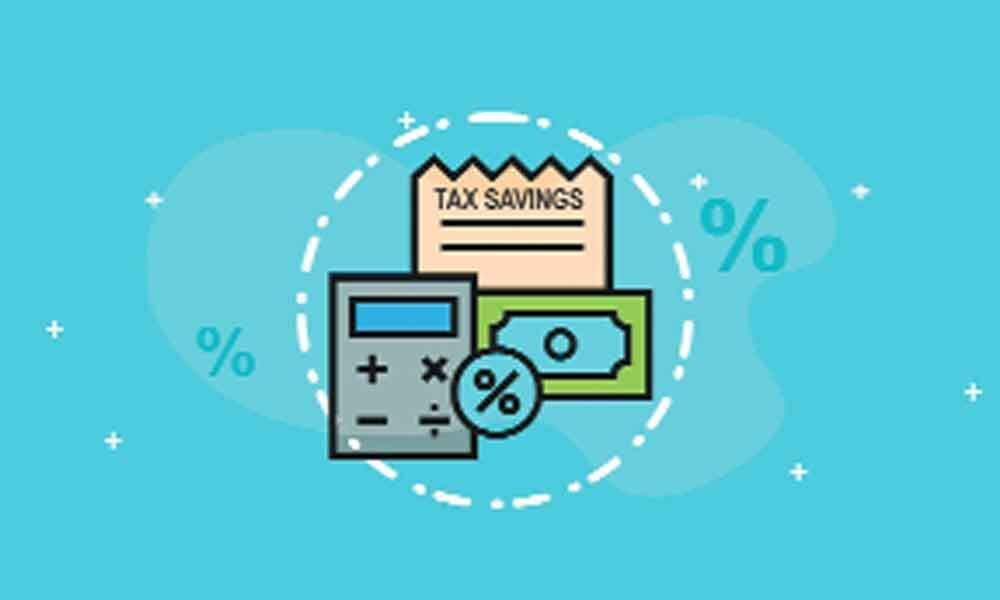Live
- Jogulamba Gadwal Police Solve Kidnapping Case in Record 8 Hours, Victim Reunited with Family
- Digital Arrests Do Not Exist… Be Cautious of Cyber Criminals - Cyber DSP Giri Kumar Kalkota
- Everyone must follow road safety rules
- Pilligundla Colony Residents Seek Justice Over Anjaneya Swamy Temple Land Dispute
- BJP Leader S Ramachandra Reddy Slams Alliance 1 Company for Exploiting Tobacco Farmers
- Timely Intervention by MLA & MLC Ensures Water Release from Tungabhadra Dam for Alampur Farmers
- NASA Astronaut Captures Stunning Aurora from Space, Sparks Debate on Authenticity
- India Squad for Champions Trophy 2025 and England ODIs: Live Updates on Mohammed Shami's Return
- District Collector Directs Swift Completion of Pending Development Works in Aija Municipality
- Triptii Dimri's Aashiqui 3 Exit Due to Bold Image in Animal, Kangana Ranaut Reacts to Censor Board Cuts in Emergency
Just In

Tax savings is an annual ritual with most investors in our country and also many keep it to the last minute.
Tax savings is an annual ritual with most investors in our country and also many keep it to the last minute. Though, tax planning forms a figment of the comprehensive financial planning, most tend to give higher importance and thereby also making some grave mistakes in choosing the right instrument for saving tax.
The uninformed and novice generally fall prey to the convoluted logic of tax savings and end up investing in less productive instruments.
Equity linked saving schemes (ELSS) offer a dynamic solution to tax savings and also form a good source of wealth creation thus carving acceptance even in the minds of financial planners.
ELSS are the mutual funds that provide tax savings and are generally open-ended funds and qualify under the section 80(C). These are the only instruments in the said section that have the least or shortest lock-in period that cover the tax savings.
The other are life insurance premium, National Savings Certificate (NSC), Public Provident Fund (PPF), Employee Provident Fund (EPF) and tax saving fixed deposits (5 years) which to the sum of up to Rs 1.5 lakh per annum are exempt from tax under this section.
ELSS are similar to equity mutual funds which mostly carry a flavour of multi-cap category but are locked-in for three years. And mind you not all locked in three-year funds qualify as ELSS and thus for tax savings.
Despite the short restriction period, they should be considered for a medium to long term investing horizon. This is because the underlying asset of these instruments being equity and related, the investment horizon should be ideally longer than three years.
That's also a reason why open-ended ELSS are preferred than the closed-ended ones as the broader markets could be volatile and if they are in a bearish or in a downturn then the possibility of lower returns is high.
And by the virtue of open-endedness, the fund could be retained in the same fund to participate in the market till the overall market environment is conducive or bullish in nature to earn better returns.
Yes, stock investments are risky and so are the ELSS. A broader analysis and risk appetite should be understood to invest in ELSS while risk mitigation strategies like limiting the exposure and systematic investment (SIP) methods would help make a judicious approach.
A longer horizon is added benefit and studies have proved that volatility is less over longer periods while earning better returns.
Also, a lump-sum or one-time investment in equities could be problematic as your entry could be at the peak and markets could take longer time to recover from the losses that may come from there.
So, ideally a staggered way of investment is better. But there is a catch in the SIP method of investing in ELSS as the maturity or lock-in would be on a pro-rata basis i.e. the first month's contribution or allocated units would only become accessible in the 37th month and the next one in 38th month, etc. taking the entire investment of a year (through SIP) would take 48 months for the entire investment to come out of the lock-in clause.
The other way is to invest the planned corpus in two or three tranches on relatively lower levels of the markets during the year. This way one could reduce the lock-in for a reduced period and also possibly time the market.
And if the contribution is again diversified i.e. if the investor is not parking the entire corpus in the ELSS then the amount of exposure to equity would also come down and so is the risk associated. Thus, the investor would gain from the market while limiting his risk.
This being the beginning of the new financial year, interested and suitable investors should explore ELSS and their first tranche could be done now so that last-minute dash of tax saving pangs could be avoided.
This would bring in a bit of discipline to the investment pattern also. Of course, the long-term capital gains (LTCG) tax introduced from this year would attract 10 per cent on the returns but with a cap of Rs 1 lakh of gains in a financial year. So, consult the financial advisor to make the right choice.
(The author is co-founder of "Wealocity", a wealth management firm and could be reached at [email protected])

© 2024 Hyderabad Media House Limited/The Hans India. All rights reserved. Powered by hocalwire.com







